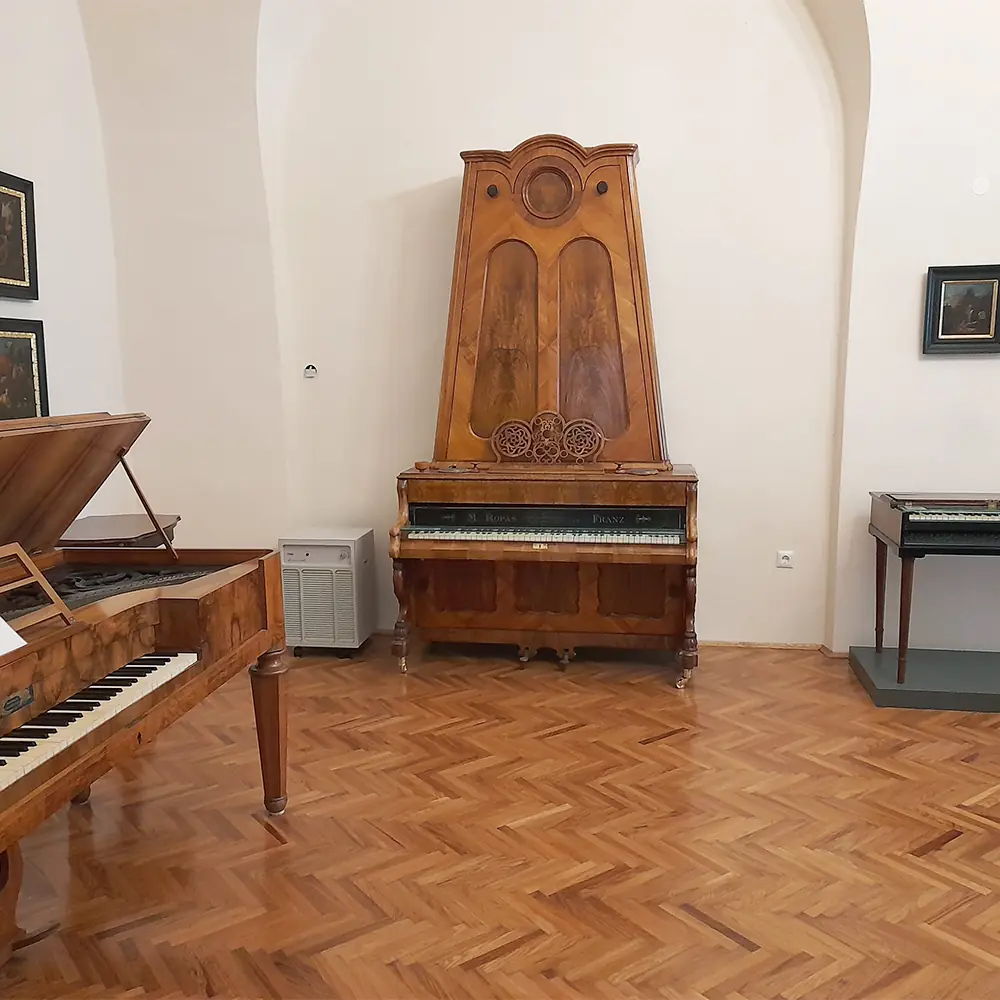Bowed String Instruments
Between the 16th and 18th centuries, many forms of bowed string instruments called violas were in use. They differed in shape, size, tuning, number of strings, and the way they were played.
In a separate display case on the right, we have a viola d’amore, a product of the great Prague instrument maker Johannes Udalricus Eberle from 1732. It has sympathetic strings tuned an octave higher under the playing strings, which resonate when played, creating a characteristically romantic sound.
The Ptuj collection includes many bowed string instruments by Slovenian luthiers, including a number of donated objects from the workshop of violinist, pedagogue and luthier Maksimilijan Skalar, who worked in various Slovenian towns, including Ptuj.
Wind Instruments
The woodwind instruments from the Ptuj collection also include examples made by great European masters, such as Johann Schell from Nuremberg and the Viennese masters Friedrich Hammig and Stephan Koch.
Among the most versatile makers of wind instruments was Simon Unglerth, who probably trained in Vienna but worked in Ljubljana. His instruments, distinguished by their excellent mechanics and the use of first-class materials, have been preserved in New York, Copenhagen, and Ptuj.
In the 19th century, special instruments such as the csakan, a flute embedded in a walking stick, were made to play lighter music. The csakan is displayed in a separate showcase to the right of the wind instruments.
Plucked String Instruments
A lute from 1694 with a preserved original case by the great Viennese master Andreas Berr came from the nearby Dornava mansion. Only two lutes survive from Berr’s workshop; the other, dating from 1699, is in the Museum of Fine Arts, Boston.
The featured plucked string instruments also include two diatonic harps, played by travelling musicians, and the double-action pedal harp, which gained popularity in orchestral and chamber music.
